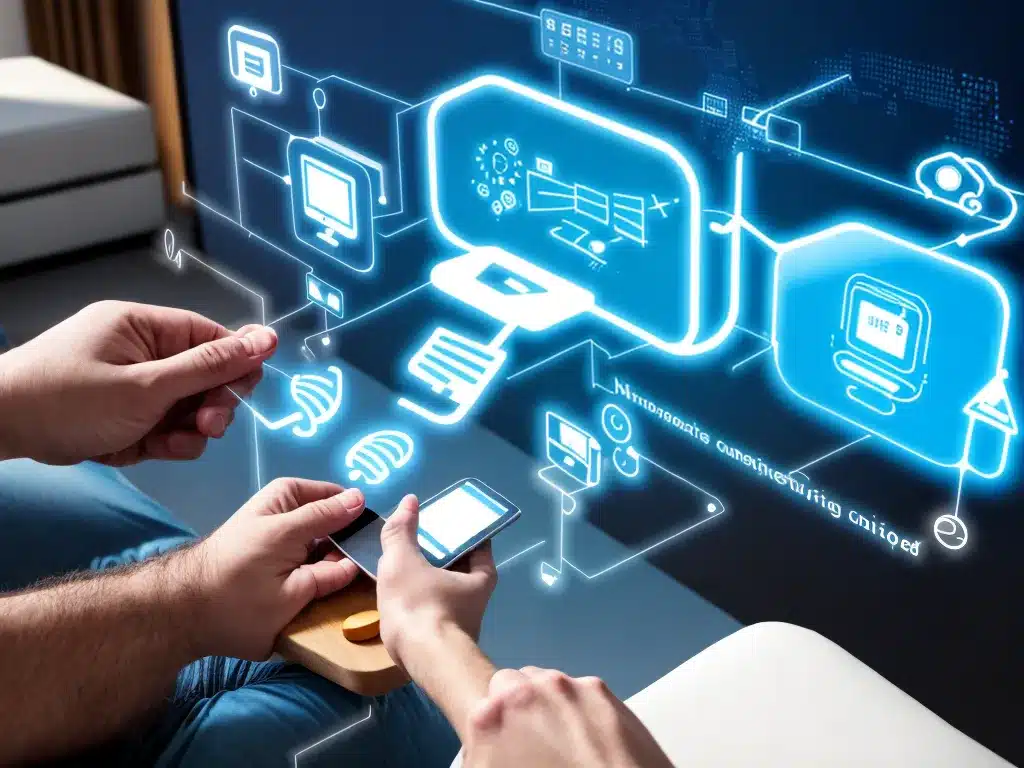
Introduction
The Internet of Things (IoT) promises to connect everyday objects and devices to the internet, enabling them to send and receive data. This interconnectivity unlocks powerful insights and efficiencies through data analysis and automation. However, realizing this vision requires overcoming key adoption challenges around consumer perceptions, technical complexity, privacy and security.
Project Connected Home, an initiative led by technology companies and retailers, aimed to accelerate IoT adoption by demonstrating real-world benefits and establishing best practices. After 3 years, they have made strong progress improving consumer understanding and developing robust IoT platforms.
Overcoming Consumer Skepticism
Many consumers were initially skeptical about filling their homes with connected devices. According to a 2018 survey, the top adoption barriers included:
- High costs of purchasing smart devices
- Privacy/security fears about data collection
- Setup complexity integrating devices and platforms
- Unclear benefits from connected appliances
To address these concerns, Project Connected Home pursued 3 key strategies:
Demonstrating Tangible Use Cases
They developed in-home IoT testbeds to showcase high-value use cases like:
- Energy monitoring for more efficient energy usage
- Automated lighting based on occupancy patterns
- Leak detection to prevent water damage
- Remote home monitoring for peace of mind
Experiencing these benefits firsthand helped consumers better understand IoT’s potential.
Emphasizing Ease of Use
Installing a smart home system can be daunting for non-tech savvy consumers. Project Connected Home worked closely with retailers to develop simplified setup and integration. They also created intuitive control apps and voice assistants so users could control devices through natural interactions.
Implementing Robust Security
All connected platforms implemented end-to-end encryption, access controls, and data minimization. They also educated consumers about security best practices like strong passwords. These measures mitigated privacy risks.
Overcoming Technical Barriers
While individual smart devices are straightforward, connecting diverse IoT devices into a seamless system posed technical challenges including:
- Platform fragmentation with many vendors using proprietary technology
- Difficulty integrating varied communication protocols like Wi-Fi, Bluetooth and Zigbee
- Need to ensure Quality of Service as more devices are added
- Lack of common data formats and APIs for interoperability
Project Connected Home drove the development of unifying IoT platforms to address these issues:
Open Standards for Interoperability
They worked with standards bodies to develop common IoT protocols like MQTT for device communication and Web of Things for APIs. Adhering to these standards improved multi-vendor interoperability.
Hub-based Architecture
An IoT hub or gateway device serves as the central point connecting and managing all home devices and platforms. The hub architecture simplified integration compared to point-to-point connections.
Scalable Cloud Platforms
Services like AWS IoT and Microsoft Azure IoT handle device connectivity, message routing, and remote control in the cloud. Their scalable nature accommodates exponentially growing device numbers.
Ensuring Robust Privacy and Security
Connected devices raised significant privacy and security concerns that could hinder adoption if not addressed properly. Project Connected Home established guidelines for:
Data Minimization and Encryption
IoT platforms only collected the minimum data necessary for functionality. All data was encrypted in transit and at rest using the latest cryptographic standards.
Granular Access Controls
Platforms allowed users to restrict data sharing and access privileges on a per-device or per-service level. Sensitive data like video feeds had the strictest access controls.
Vulnerability Testing and Updates
Vendors subjected devices and platforms to rigorous third-party penetration testing and worked quickly to patch identified vulnerabilities. Automatic security updates ensured devices stayed secure over time.
User Education
Simple Password tips, cyberhygiene guides such as changing default passwords, and caution against oversharing data educated consumers on playing their part in IoT security.
Looking Ahead
In just 3 years, Project Connected Home has made tremendous progress in transforming the consumer IoT experience. Moving forward, they aim to further expand real-world deployments, integrate AI for intelligent automation, and continuously improve privacy protections as IoT becomes mainstream. The project demonstrates that through cross-industry collaboration, even complex challenges inhibiting emerging technologies can be systematically overcome.












